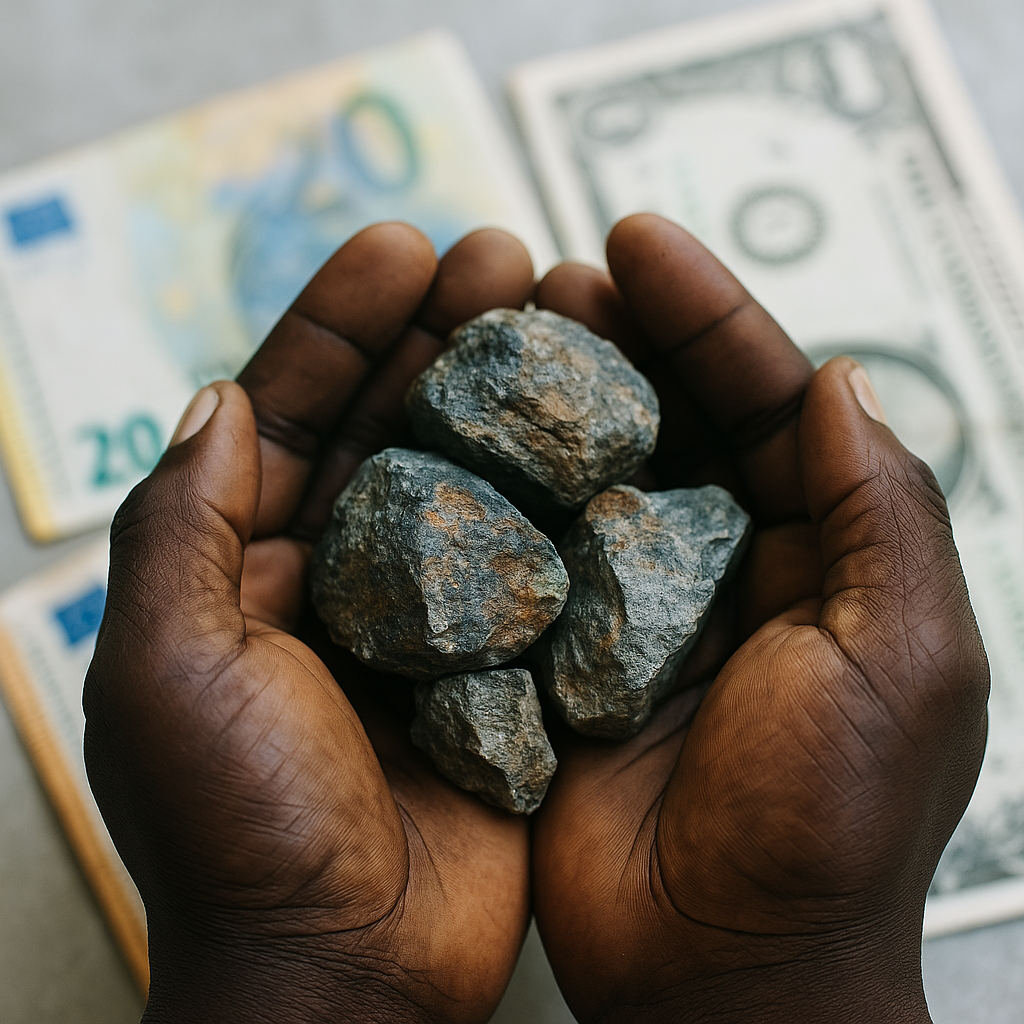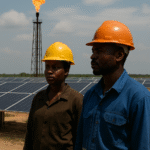As the world races to decarbonise, Africa has emerged as the new frontier for the minerals that make the green economy possible. From cobalt and copper to lithium and graphite, the continent holds the raw materials that feed electric vehicles, solar panels, and battery storage systems.
Yet a new United Nations Environment Programme (UNEP) report released recently sounds a note of caution: the same financial systems that once underwrote fossil fuel extraction now shape the contours of the so-called green-minerals boom.
In other words, the future is being financed, but not necessarily on Africa’s terms.
The New Gold Rush in Green
The UNEP-hosted report, Responsible Finance for Energy Transition Minerals, estimates that demand for critical minerals will quadruple by 2040 as global economies electrify. But the financial flows mobilised to meet this demand reveal familiar asymmetries.
Between 2016 and 2023, nearly 70 per cent of foreign direct investment in African mining came from non-African financiers, predominantly China, the European Union, and the United States. Most of this capital was directed not toward domestic value addition but upstream extraction, the lowest rung in the value chain.
The report warns that unless African countries restructure their financial agreements, they risk replaying the extractivist pattern of the past century: exporting raw materials cheaply while importing expensive finished technologies.
Put simply, the new scramble for critical minerals risks becoming a green-tinted rerun of the old resource game.
Finance Without Fairness
At the heart of the problem lies who sets the terms of finance. UNEP highlights that over half of current African mineral projects are financed through debt instruments or equity arrangements negotiated in foreign currencies, primarily dollars and euros.
Such deals introduce three structural vulnerabilities:
- Exchange-rate risk: Local currencies depreciate while repayment obligations remain dollar-denominated, inflating costs.
- Revenue leakage: Profits are repatriated abroad through offshore holding structures.
- Policy distortion: When financing depends on external lenders, national governments may prioritise investor confidence over developmental equity.
Even concessional loans or sustainability-linked bonds can conceal hard conditionalities. The result is a paradox: Africa supplies the world’s low-carbon minerals but remains locked into high-risk finance.
Regional Pioneers: Africa’s New Financial Architects
While multilateral lenders debate frameworks, a new generation of African-led financiers is already moving from rhetoric to reality. The Africa Finance Corporation (AFC) and Africa50, two of the continent’s most active infrastructure investors, have begun repositioning their portfolios toward strategic energy and mineral assets.
In 2025, AFC announced a $2 billion “Sustainable Resource Acceleration Platform”, targeting equity participation in mineral processing zones, battery manufacturing, and renewable-powered mining operations. The model rejects the traditional debt-heavy approach in favour of shared ownership and blended finance, giving African governments and local firms a stronger equity voice.
Similarly, Africa50 has expanded its focus from roads and power transmission to value-chain infrastructure including industrial parks designed for lithium, cobalt, and manganese processing. Its upcoming partnership with the African Export-Import Bank (Afreximbank) seeks to mobilise African pension funds and sovereign wealth capital into these ventures.
Both institutions share a common philosophy: Africa cannot achieve energy sovereignty by outsourcing the capital that funds it. As one AFC executive recently noted, “we must move from being borrowers of climate finance to builders of climate assets.”
Together, these experiments hint at a quiet financial revolution, one where African capital finances African transformation, blending risk-sharing with accountability and setting the stage for the continent’s own version of a just energy economy.
The Unequal Cost of Green Capital
The UNEP report further reveals a stark pricing inequity. African countries often pay twice the global average in interest rates for mining-related infrastructure. That is not a reflection of geology, but of perception: risk premia baked into global credit systems that still regard African borrowers as inherently insecure.
This inflated cost of capital translates directly into slower project delivery, weaker community benefits, and smaller fiscal margins. It also shifts negotiating leverage toward multinational firms and commodity traders that can raise capital cheaply elsewhere.
Meanwhile, public-private partnerships touted as a solution often replicate the same asymmetry. Local governments shoulder environmental and social liabilities, while private financiers capture revenue flows.
This dynamic makes the term “partnership” a polite euphemism for unequal risk-sharing.
Local Value or Lost Opportunity?
The numbers tell a sobering story. According to the International Energy Agency (IEA), Africa holds nearly 30 per cent of global mineral reserves critical to the energy transition still it captures less than 5 per cent of the downstream value.
Manufacturing capacity for battery cells and solar components remains negligible: Africa’s share of global battery output is under 1 percent, and its solar panel assembly capacity stands at 2 percent.
Without deliberate policy interventions, the continent risks becoming the world’s quarry, supplying the minerals for electric cars and solar farms that are built, owned, and financed elsewhere.
Rethinking “Responsible Finance”
UNEP’s report calls for a fundamental reset in how “responsibility” is defined. It is not enough for financiers to disclose carbon footprints or adhere to ESG criteria if economic justice is excluded from the equation.
A financing deal cannot be called sustainable if it:
- Leaves local communities uncompensated or dispossessed.
- Locks countries into debt for projects whose benefits are exported.
- Prioritises shareholder returns over developmental outcomes.
The new benchmark for responsibility must be shared value, local control, and future resilience, not merely “green compliance.”
Emerging Continental Levers
Encouragingly, several regional instruments are converging toward this agenda.
- The African Mining Vision (AMV), revised in 2025, now includes explicit targets for in-continent processing and regional supply chains.
- The African Union’s Critical Minerals Strategy promotes harmonised taxation and transparency frameworks to curb harmful competition between states.
- The Southern African Development Community (SADC) and East African Community (EAC) are developing cross-border beneficiation corridors that could pool infrastructure and markets.
Yet without coherent financing reform, these frameworks risk remaining aspirational. Vision without liquidity cannot deliver transformation.
Learning from Past Resource Booms
History offers painful lessons. During the commodity super-cycle of the 2000s, windfall revenues from oil, copper, and diamonds often vanished into sovereign debt and fiscal crises. The failure was not only one of governance but also of financial architecture: Africa exported raw materials but imported capital on unfavourable terms.
To avoid that outcome, financial institutions must embed domestic capture targets, requiring that a share of profits, processing, and employment remain in country. Donor nations, for their part, must replace debt-based instruments with equity partnerships and concessional guarantees.
The Next Frontier: Financing in Africa’s Own Currency
Perhaps the most transformative reform would be to finance the transition in African currencies. Doing so would reduce foreign-exchange exposure, stabilise debt ratios, and align incentives between governments and investors.
The AfDB’s recent exploration of a mineral-backed accounting unit, using verified reserves as collateral for local-currency lending, represents a bold step in this direction. While still conceptual, it signals an important shift: financing sovereignty as the foundation of energy sovereignty.
A local-currency model would not only lower the cost of capital but also anchor accountability within African institutions, not offshore bond markets.
Conclusion: Financing the Future, Not Repeating the Past
The global race for green minerals is not inherently unjust, but its justice depends on who writes the rules.
Africa’s wealth of cobalt, lithium, and copper can either fund a new era of industrialisation or entrench another cycle of dependency. What will determine the outcome is not geology, but governance; not reserves, but reform.
If the continent can reclaim control over how its transition is financed, in whose currency, under whose contracts, and to whose benefit, it may finally turn extraction into empowerment.
Otherwise, the next great green boom will look disturbingly familiar.




Pingback: Financing Africa’s Power Gap: Why Access to Capital Still Determines Access to Electricity - Energy Transition Africa
Pingback: Africa’s Energy Transition Standstill: Why Sub-Saharan Readiness Is Failing to Improve - Energy Transition Africa
Pingback: From Extraction to Industrialisation: Africa’s Critical Minerals Value Chain - Energy Transition Africa From Extraction to Industrialisation: Africa’s Critical Minerals Value Chain